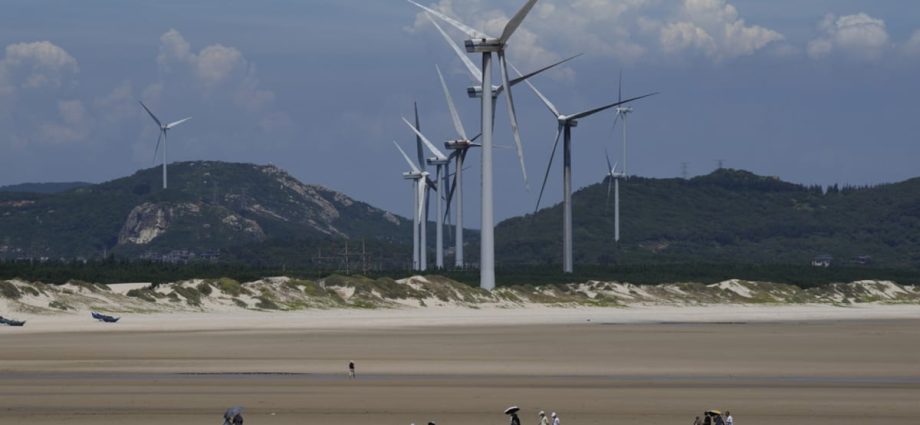
IMPORTANCE OF ASIA PACIFIC
The firm’s president of Asia Pacific business Per Mejnert Kristensen said he believes that the region is very important in terms of the green transition.
“Orsted has a vision to create a world that runs entirely on green energy. And if you want to do that, Asia Pacific is obviously very, very important,” he said.
“It’s an area where a lot of energy is consumed. It’s also an area where we are seeing the effects of greenhouse gas emissions.”
He added that the conditions for setting up offshore wind farms are very good, given the wind speeds. Taiwan has the potential to become one of the frontrunners in the transition into renewables, he said.
Wind is the largest and fastest-growing source of renewable power globally. It generated nearly 8 per cent of all energy last year. Combined with solar, it tallies to 12 per cent.
However, fossil fuels are still generating 80 per cent of total energy. Environmental professionals say that even with wind power generation seeing double-digit annual growth, it would not be enough.
NEED TO INCREASE WIND ENERGY
The Global Wind Energy Council said yearly wind energy installations must scale up by four times in this decade to help keep the worldwide average temperature rise below 1.5 degrees Celsius.
Energy think tank Ember said wind power must account for more than 20 percent of global electricity by 2030 if net-zero emissions goals are to be achieved.
Growth may be the only solution for the wind industry, and this requires bigger turbines, bigger blades and bigger farms.
China now boasts the largest offshore wind turbine at more than 250m tall. Its 128m-long blades can sweep an area equivalent to around seven standard football fields.
But while bigger is better, it presents another problem.
THE ISSUE WITH LARGE WIND FARMS
Giant wind farms are more complicated to install and maintain. They require very specialised and expensive ships, according to Singapore-based fund Seraya Partners.
Last year, the investment firm launched Cyan Renewables, a company that owns, operates, and leases vessels for offshore wind farms.
“We enable wind farms to be built across Asia. And we provide the vessels, specialised vessels, … to help build and maintain these wind farms,” said the fund’s chairman and managing partner James Chern.
However, Cyan Renewables is trying to solve a major problem – the demand for their ships far outstrip supply.
“There are only five or six major shippers in Asia, maybe one in Europe. They’re still churning out new vessels. And generally, it takes about three years to build new vessels,” said Mr Chern.

